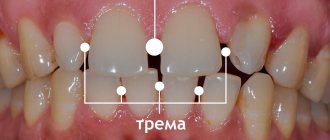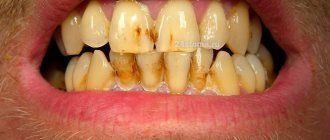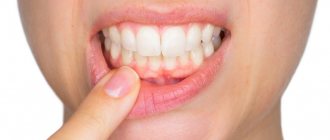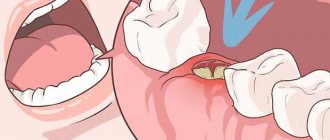Memo to the patient after caries treatment and dental filling.
Today, modern filling materials can last for decades – they are so durable and aesthetically pleasing. However, the service life largely depends not only on professional treatment, but also on the attitude of the patient himself - it is important to have professional teeth cleaning at least once a year, as well as follow some simple recommendations to ensure that the filling lasts as long as possible.
If the filling creates discomfort after treatment
Even in the dental office, after placing the filling, be sure to make sure that the restored tooth does not interfere, i.e. does not overestimate the bite (to do this, you need to create chewing movements of the lower jaw forward and backward, sideways, carefully close your teeth). The filling should not be felt or change the bite. There is no need to be embarrassed to talk about this discomfort to your doctor - sometimes the final stage of filling treatment can take even more time than preparing carious cavities and applying filling material, because The doctor’s main goal is to create multiple contact points between the filled tooth and the antagonist and in no case “turn off” the filling from the bite because this is fraught with changes in the temporomandibular joint.
After treatment, local anesthesia wears off within 1.5-2 hours. If a conductor type was used, then after 4-6 hours. Then you begin to fully feel the restored tooth, you can fully close your jaws and understand how comfortable you are after the treatment.
If you experience a little discomfort, you feel like the tooth is a little higher and your jaw isn't closing quite tightly - this is normal. The fact is that now you have been given a new filling in accordance with the bite, that is, with the shape and position of the antagonist tooth located on the opposite side. Therefore, if there is no sharp pain, be patient for a few days. If the situation normalizes and you get used to it, then there is no reason to see a doctor. If discomfort persists for 1-2 weeks, you should visit your dentist to have the filling corrected.
How to remove gaps between teeth?
Modern dentistry offers the following options:
- Veneers. They are dental onlays attached to the front surface of the patient's teeth. Their main purpose is to correct the aesthetics of the dentition without the need for orthodontic treatment. Veneers are made in Moscow strictly individually in a dental laboratory. At the first stage, the patient’s tooth is ground down (a thin layer of enamel is removed), and an impression is made of it, which serves as a sample for creating a veneer. Making a veneer takes from 7 to 14 days, during which time the patient wears temporary veneer structures. After the permanent veneers are made, fitting is carried out, their compliance with aesthetic standards and the wishes of the patient is checked, if everything is good, the specialist fixes the veneer. The advantages of this option include the ability to correct even wide gaps between teeth in the shortest possible time.
- Bracket systems. The safest, high-quality method, loyal to dental tissues, but also the longest. To correct the bite, braces are used. If the patient is a child whose baby teeth have only recently been replaced by permanent teeth, braces are the best option. Modern braces are almost invisible, so they do not cause discomfort in everyday life. In addition, you can always order lingual braces, which are attached to the inside of the dentition, which means they are absolutely invisible. The time for wearing braces is determined by the dentist individually in each case - the timing depends on the structure of the teeth, the age of the patient, the size of the gap and other factors. Usually we are talking about a time range from six months to two years.
- Artistic composite restoration. This is the most preferred method when it comes to eliminating gaps between fangs, incisors, and slight curvature. Composites are photopolymer elastic materials that are applied layer by layer and harden under a photopolymerizer (special lamp). The advantages of artistic dental restoration include the speed of achieving results (restoration takes up to half an hour to two hours), the absence of painful sensations for the patient, and the absence of the need to grind down tooth enamel.
The above are not all the ways to get rid of gaps between teeth. Perhaps your dentist, having assessed the condition of your oral cavity, will offer you a more effective and/or profitable alternative - this could be a plastic transparent mouthguard (easily removed, allowing you to combine the adjustment of the position of your teeth with their whitening), corrective fillings or crowns.
How much should you not eat after getting a filling?
If a filling made of chemical composites is installed, then you should refrain from eating and drinking for 2 hours. This is due to the fact that the material requires a certain time for final hardening.
If a “light” composite filling is placed, you can drink immediately, but you should abstain from food for 1.5-2 hours. But the reason is not in the material (it hardens a few seconds after applying and polymerizing a special lamp), but in anesthesia - with reduced sensitivity of the mucous membranes during eating, you can injure the mucous membranes of the cheeks and lips.
During the day after the filling is installed, you should only consume foods that are temperature-neutral - excessively hot or cold foods can lead to deformation of the filling. It is necessary to chew food on the opposite side for the first day - this will allow the material to fully “adhere” to the tooth tissues, without the risk of damage.
Installing a seal
Identifying the need for tooth filling
The dentist may use several methods to detect tooth decay, including the following:
- Examination
- Discolored areas on the surface of teeth can sometimes be signs of tooth decay. The dentist may use a dental probe—a metal instrument with a sharp tip—to identify the cavity. Healthy tooth enamel is hard and will withstand the pressure of the probe. The affected enamel is soft, and the probe will easily pierce it. The probe is used with caution: too much pressure from the probe can damage a healthy tooth, and the probe can spread bacteria, which will lead to the development of caries on other teeth. - Cavity Dye
- This dye is applied by the dentist to the surface of the tooth enamel. It lingers on the affected areas and is easily washed off from the surface of healthy teeth. - X-rays
- X-rays can detect decay developing on the enamel of the sides of the tooth where it touches other teeth, as well as in the layer of dentin underlying the enamel. At the same time, X-ray radiation often does not accurately detect small carious cavities on the chewing (occlusal) surface of the tooth. Existing fillings and other restorative materials may also prevent the cavity from being identified. - Laser Fluorescence Cavity Detection
- This method involves assessing changes caused by caries using a small laser probe. This device is especially useful when examining the chewing surfaces of large and small molars.
Caries is not the only reason that requires tooth filling. Other reasons include:
- Fracture or crack of a tooth;
- Abrasion of the surface of teeth as a result of careless treatment of them, for example: Biting nails;
- Teeth grinding (bruxism);
- Opening various objects with teeth.
Dental filling procedure
Before filling a tooth, your dentist may, if necessary, administer a local anesthetic to numb the area being treated. The dentist then removes decay from the surface of the tooth using a dental drill. Lasers can also be used to remove tooth decay.
The drill, namely its dental handpiece, is equipped with a metal cone called a bur, which cuts through the enamel and removes tissue affected by caries. Burs come in different shapes and sizes. The dentist selects the appropriate bur depending on the size and location of the carious cavity.
First, the dentist uses a high-speed handpiece (which makes a familiar buzzing sound) to remove decay from unsupported areas of enamel. Once the bur reaches the dentin, the second layer of the tooth, the dentist may use a lower speed handpiece because dentin is softer than enamel.
After removing the decay, the dentist treats the cavity, preparing it for a filling. Each type of filling requires a specific processing method that ensures its fixation. The dentist may use a liner as the base of the filling to protect the dental pulp (the layer that contains the nerves). Such a support may include a composite resin, glass ionomer, zinc oxide and eugenol, or other materials.
Some of these materials release fluoride, which prevents further tooth decay.
If the dentist uses a buildable filling, he first etches (treats) the surface of the tooth with an acid-containing gel. Etching leads to the formation of small depressions in the tooth enamel, which are filled with a composite material during filling. A bonding material is also used, which ensures a double connection between the filling and the tooth. Using buildable fillings can reduce the risk of developing tooth decay under the filling. Tooth augmentation is usually performed using composite fillings.
Certain types of fillings harden under the influence of special radiation. In such cases, the dentist will apply the filling material in layers, stopping several times to treat the resin with radiation. This procedure ensures drying (hardening) of the material and strengthens it.
After completing the filling, the dentist finalizes and polishes the tooth using burs.
After teeth filling
Some people experience increased tooth sensitivity after filling. A filled tooth may react to external pressure, air, sweet or cold foods. Increased tooth sensitivity is most often caused by composite fillings, but this can also occur when using other types of filling materials.
The most common cause of pain that occurs immediately after the anesthetic wears off is an excessive filling height. In this case, make an appointment with your dentist as soon as possible to reduce the height of the filling.
The second type of discomfort can be a sharp electric shock that occurs only when the teeth touch. This shock is called galvanic shock and is caused by the contact of two metal fillings (the filling on the recently filled tooth and the filling on the opposite tooth), which creates an electric current in the oral cavity. Such cases are possible, for example, if the new filling on the lower tooth is made of amalgam, and a gold crown is installed on the upper tooth opposite it.
In most other cases, sensitivity subsides within one or two weeks. Before this period expires, try to avoid the influence of all unfavorable factors. If the tooth is extremely sensitive and the sensitivity does not subside even after two weeks, contact your dentist.
It is important to tell your dentist about any pain you experience so that when you apply your next filling, he or she can select a different material and make changes to reduce the sensitivity. Different people have different responses to types of filling materials, and your dentist cannot predict how your tooth will react to a particular type of material.
Try to describe your pain sensations to the dentist as accurately as possible. Depending on the information you provide, further actions will be determined. The dentist may remove the filling and apply a new one, or they may also insert a lining or a substance that reduces the sensitivity of the tooth. If the cavity being filled is very deep, root canal treatment may be necessary to correct the problem.
After the filling is placed, the dentist polishes it, but sometimes sharp edges may remain. Due to the anesthesia, you may not feel them at first. If you notice any sharp edges, contact your dentist as soon as possible and arrange to have the tooth surface smoothed to avoid damage to your tongue and mouth.
Temporary fillings
Temporary fillings (usually white, off-white or gray) are applied in the following cases:
- Treatment requires more than one visit;
- The dentist considers it necessary to wait time for the tooth to heal;
- You have a deep cavity and during treatment the pulp (the layer containing nerves and blood vessels) is exposed;
- You require emergency dental treatment.
A temporary filling can improve the condition of the tooth because it covers the tooth, protecting the pulp from bacteria and easing sensitivity.
Temporary fillings often contain eugenol, an ingredient in over-the-counter toothache treatments. Eugenol is also found in clove oil, traditionally used to relieve toothache.
Temporary fillings are not designed to last long. They usually fall out, crack, or wear out within one to two months. After applying a temporary filling, be sure to replace it with a permanent one, otherwise the tooth may become infected or other types of damage may occur.
Reasons for replacing fillings
Fillings don't last forever. They may become discolored. Composite fillings, which are the color of natural teeth, become stained, yellowed, or darkened over time. When chewing, the teeth and the fillings that cover them are subjected to very strong pressure. Even if there is no other damage, some fillings wear out over time and require replacement. The seal may require earlier replacement if it falls out, loses its tightness, or develops cracks.
A cracked or leaking filling can allow bacteria and food particles to penetrate. Since you cannot brush such areas, bacteria can feed on leftover food and produce acid, which causes dental caries. The cavity formed under the filling can grow significantly before you notice it or feel pain. Therefore, you should regularly check the condition of fillings and replace them if damage is detected.
Fillings falling out
Fillings can fall out for several reasons:
- When chewing, too much pressure is applied to a tooth that has a large filling, which destroys the filling or tooth.
- The material used to apply the filling cannot withstand the pressure that is applied to it. For example, if you have a large portion of your front tooth chipped, a porcelain crown (the color of your natural teeth) may be the best solution. In some cases, the dentist may place a composite filling instead. This may look secure and acceptable, but if the seal is too large, the plastic may break off if you bite hard on food.
- When a filling is applied, saliva enters the cavity being filled. If the filling consists of composite resins, saliva will disrupt the binding of the filling material, as a result of which it will not be able to attach firmly enough to the surface of the tooth and will fall out over time.
Formation of cracks in fillings
Both amalgam and composite fillings can crack either soon after they are placed or over time.
Cracks can occur soon after the filling is installed if the filling rises above the rest of the tooth surface and is therefore subject to the strongest pressure when biting food. Cracks can also form over time as the filling and the restored tooth experience pressure from biting and chewing food.
Also, small cracks may form along the edges of the filling, which are usually caused by its gradual abrasion. Such cracks can often be repaired.
Loss of seal tightness
A filling is said to have lost its integrity if one of its sides is not tightly connected to the surface of the tooth, as a result of which food debris and saliva can penetrate into the gap between the filling and the tooth. This can lead to tooth decay, discoloration, and tooth sensitivity.
Both amalgam and composite fillings can lose their seal. Amalgam fillings sometimes lose their seal a little after they are placed. You may notice this by increased sensitivity to cold foods. This sensitivity weakens over the next two to three weeks and then disappears completely. During this period, the amalgam filling undergoes natural corrosion, which leads to the closing of the gap at the edges of the filling and elimination of the leak.
A composite filling can be contaminated by saliva, which weakens the chemical bond between the filling and the tooth and leads to loss of seal. In other cases, small gaps may occur where the tooth and filling come into contact. Such gaps may be the result of the filling drying out after its application. The increased sensitivity that occurs after applying a composite filling may disappear over time. If this does not happen, the filling must be replaced.
Seals may lose their tightness as a result of their gradual abrasion. Such fillings need to be replaced.
Abrasion of fillings
Some fillings can last for 15 years or more. Others require replacement after 5 years. The dentist can determine how worn the filling is and whether it needs to be replaced.
Jaw clenching and teeth grinding
The habit of clenching your jaw and grinding your teeth can damage your fillings. The pressure exerted on the teeth can increase their sensitivity and accelerate the wear of fillings. Jaw clenching and teeth grinding also causes cracks in teeth and fillings, or widens existing hairline cracks—thin cracks that can be seen when shining a light on the tooth.
Rules for caring for fillings
Although some fillings can last for many years, the average lifespan of an amalgam filling is about 12 years, and composite fillings can break down even faster.
Your dentist should check the condition of your fillings as part of your regular checkup. An x-ray may be necessary if the dentist needs to check for cracks or leaks in the filling or decay underneath it. You should make an appointment with a dentist in the following cases:
- Increased tooth sensitivity;
- Crack detection;
- Part of the filling appears to have fallen out.
Visit your dentist regularly for professional oral hygiene and brush your teeth with fluoride toothpaste and floss once a day. If you have many fillings or very large fillings, your dentist may prescribe a fluoride gel that you can apply at home. The use of fluoride will strengthen tooth enamel and prevent the formation of new carious cavities. Also, during the examination, the dentist or dental hygienist may coat the filled teeth with fluoride varnish.
In addition, you can use rinses that reduce the level of acids in the mouth, and therefore the number of bacteria that cause tooth decay. This will reduce the formation of new carious cavities.
If your fillings are cracked, you may want to ask your dentist about using night guards. Wearing them at night will prevent jaw clenching and teeth grinding during sleep.
Replacing fillings
Before removing the filling, your dentist will give you treatment options. It is often possible to restore an old filling without replacing it completely. However, if the filling needs to be completely replaced, the dentist may change the filling material used. Tell your dentist your wishes regarding the appearance of the filling, then he will be able to choose the material that best suits you.
If your tooth hurts after getting a filling
Minor pain may persist for several days or even a couple of weeks, which is explained by overheating of the tissue due to the use of boron, and therefore the preparation is usually carried out with cooling with water. In some situations, for example, with deep caries or when treating front teeth, increased sensitivity can persist even for several months. But in such a situation, you should still consult a doctor for an x-ray to make sure that there is no infected tissue left under the filling and that inflammation has not affected the nerve.
Can my gums hurt after filling?
The gums in the area where the anesthesia was administered may ache for several days - this is completely normal and does not require any measures. The mucous membrane may also be slightly inflamed if special rings or matrices were used during treatment, which are placed on the tooth to form the correct shape of its crown and create ideal interdental contact. The gums can also be damaged if the doctor applied the filling material in close proximity to the mucous membrane or even under it - in such a situation, the gums are deliberately moved back, the gums are retracted with a special thread or coagulated. Therefore, pain is a normal reaction to external intervention.
All of these conditions are variations of the norm. But if the pain intensifies, redness and swelling of the mucous membrane progresses, you need to consult a doctor.
Differential diagnosis of tooth dislocation at SM-Dentistry
Only an experienced dentist can diagnose a tooth dislocation and distinguish it, for example, from a crown fracture. Usually, not only the tooth itself is injured, but also the tissues surrounding it. In particular, a crack may form in the jawbone. In any case, an objective examination is needed to assess the patient’s condition and the possible consequences of the injury.
The SM-Dentistry doctor will examine the injured area and offer diagnostics using modern equipment:
- dental x-ray of the tooth;
- computed tomography (panoramic image using the Galileos device);
- three-dimensional x-ray examination of the maxillofacial area using the Vatesh apparatus.
How to properly perform hygiene procedures
After treatment, brush the filled tooth carefully, applying minimal pressure to it. Do not use rinses containing abrasive substances and alcohol, which can increase the plasticity of the material - this will lead to a change in the shape of the filling. Also, do not use overly hard brushes - they can leave microcracks in the material, which will not have the best effect on the durability of the filling.
In general, you should take care of teeth with fillings in a completely standard way:
- daily brushing of teeth twice a day - in the morning after breakfast and in the evening after all meals, after - rinsing the mouth with water and rinse,
- To clean the area of filled teeth after eating, it is better to replace dental floss with an irrigator. If you floss (thread) carelessly, you can touch the installed filling, especially if there are thin edges of the tooth, which will lead to its chipping or loss.
Gums can also cause toothache
Tooth decay is not always the cause of tooth pain, as the soft tissue can also become inflamed and cause pain. In particular, older patients are more likely to suffer from periodontitis, which, if left untreated, not only becomes increasingly painful, but can also lead to the loss of healthy teeth. Because if gingivitis is not treated professionally, the gums may recede further and thus expose the neck of the tooth. This not only increases the risk of tooth decay, but also increases the sensitivity of the teeth to pain, since the necks of the teeth are not surrounded by a protective layer of enamel.
Periodontitis, if detected early, can be well treated to keep gums healthy for a long time, but the patient also needs to improve their oral hygiene. The first major warning sign is blood on your toothbrush. If you spit reddish foam into the sink after brushing your teeth, you should make an appointment with your dentist to find out why. Even though gingivitis is often painless at first, in advanced stages it can cause significant pain and be much more difficult to cure.
Is it necessary to follow a diet after caries treatment?
From the diet as a whole after caries treatment (especially if a large filling is installed and your own tooth has very thin walls), it is recommended to remove too hard foods - toffees, chewing gum, grilled fruit, nuts, etc. Or chew them with teeth located on the opposite side (if they do not have fillings).
Minimize the amount of consumed foods and drinks that contain coloring pigments (tea, coffee, beets) - under their influence, the filling material may slightly change its shade. This rule is especially relevant when restoring front teeth.
How to maintain your treatment guarantee
To maintain the guarantee, the patient must strictly follow all recommendations: do not overload the tooth, do not use it for other purposes (for example, opening beer bottles, biting off threads), and also regularly see the doctor in accordance with the individual schedule of medical examinations, approximately once every six months. Unfortunately, many patients forget about this, and it is the last point that is the key to maintaining the guarantee for treatment.
You need to visit a doctor 1-2 times a year. During a preventive examination, the dentist will be able to make sure that the filling is in good condition, and that secondary caries does not develop again under it.
Check yourself: when to see a doctor
If a tooth hurts 2-3 days after the filling is placed, and the pain noticeably intensifies when pressed at night, this may indicate a relapse of caries and damage to the dental nerve. If black spots are visible under the filling several months after treatment, the filling interferes with the closure of the jaws or there is prolonged pain when pressing on the tooth. Do not ignore these symptoms and do not be afraid - this is a reason to contact your attending physician - all work must be carried out within the framework of the guarantee of the medical institution. Timely treatment is the key to the health of your teeth!
Causes of dental injury
Acute injuries in almost forty percent of cases lead to destruction and even loss of teeth. You can get such an injury at any age, but statistics say that most often children suffer from acute injuries, because they often do not realize the likelihood of a sudden fall while playing or do not understand how much harm handling sharp objects can cause them.
In case of acute injury, one or several symptoms may be observed: violation of the integrity of the crown of the tooth, destruction of the tissues surrounding the tooth, damage to the dental roots.
The main causes of chronic dental trauma are a person’s malocclusion and errors in dental treatment, which negatively affect their further condition. Bad habits also influence the appearance of chronic injuries, for example, if a person chews heavy nuts, sooner or later the tooth may not be able to withstand the load. Accompanying chronic injuries is the abrasion of the cutting part of the tooth, the formation of erosions and defects.









